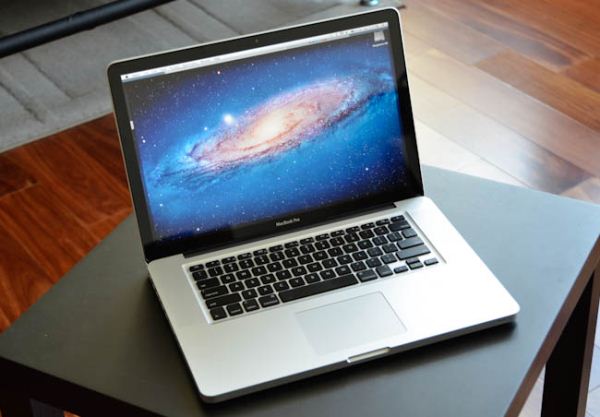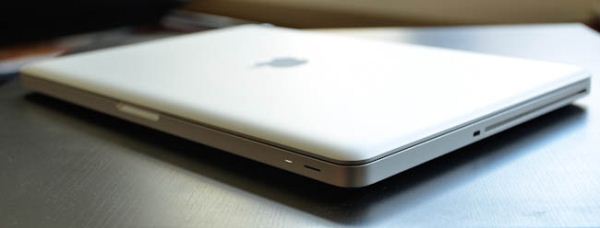The 2012 MacBook Pro Review
by Vivek Gowri on July 18, 2012 2:00 PM EST- Posted in
- Mac
- Apple
- MacBook Pro
- Laptops
- Notebooks
With most of the attention from Apple's hardware refresh event centered around iOS 6 and the new Retina MacBook Pro, the updated 2012 edition of the regular MacBook Pro has flown a little bit under the radar. Basically, it’s just an Ivy Bridge-infused version of the venerable unibody MacBook Pro chassis that we’ve known and loved for the last few years. The details don’t bring any particularly earth-shattering revelations, with 13” retaining the dual-core processor and integrated graphics, while the 15” makes the switch from AMD to Nvidia’s new Kepler-based GT 650M dedicated graphics. Along with Ivy Bridge, the 2012 MBP line gets HD 4000 graphics and USB 3.0 across the board, plus a free update to Mountain Lion when it releases later this summer. Naturally, it doesn’t generate the same kind of excitement that the all-new, all-awesome Retina MacBook Pro does. But is a less headline-worthy computer necessarily a worse one?
It’s pretty difficult to find things to write about the 2012 MacBook Pro hardware. You can essentially sum it up in one paragraph, or even one sentence if you try hard enough. The 2012 MBP looks exactly like the 2011 MBP, which looked exactly like the 2010 MBP, which looked exactly like the post-April 2009 MBP. It’s likely to be the last iteration of the original unibody MBP, giving this body style a 4.5 year run as one of the most instantly recognizable notebook computers on the market. I’m not going to go too far in depth with analyzing the design, because we’ve gone over it a few times over the years (here, here, here, here, here, and here. Oh and here too, just for good measure.)
It’s a solid notebook, that much is certain. From an SKU standpoint, Apple has kept things relatively straightforward, with a high end and a low end for both the 13” and 15” models. Starting at $1199, the MBP13 comes with a 2.5GHz Core i5-3210M, 4GB DDR3, and a 500GB HDD, while the higher end SKU bumps that to a 2.9GHz i5-3520M, 8GB DDR3, a 750GB HDD, and a $1499 pricetag. Other than the updated processor/integrated graphics and the addition of USB 3.0, the 13” is identical to the previous model that we covered in depth last year.
The 15” is a bit more interesting. The base $1799 SKU comes with a quad-core i7-3615QM (2.3GHz) and a 512MB Nvidia GeForce GT 650M dGPU, but makes do with a paltry 4GB of memory and a 500GB hard drive. The standard memory and storage configuration in a nearly-$2000 notebook is pretty unacceptable. This being Apple, upgrade pricing is still a hair away from being highway robbery, but at least the matte WSXGA+ screen upgrade costs a reasonable $100. Thankfully, unlike the rMBP and MacBook Air, you can always opt to buy RAM and storage upgrades on your own.
| 2012 MacBook Pro Lineup Comparison | |||||
| 15-inch Mid 2012 MacBook Pro | MacBook Pro with Retina Display | ||||
| Dimensions | 0.95 H x 14.35 W x 9.82" D | 0.71 H x 14.13 W x 9.73" D | |||
| Weight | 5.6 lbs (2.54 kg) | 4.46 lbs (2.02 kg) | |||
| CPU | Core i7-3615QM | Core i7-3720QM | Core i7-3615QM | ||
| L3 Cache | 6MB | 6MB | 6MB | ||
| Base CPU Clock | 2.3GHz | 2.6GHz | 2.3GHz | ||
| Max CPU Turbo | 3.3GHz | 3.6GHz | 3.3GHz | ||
| GPU | Intel HD 4000 + NVIDIA GeForce GT 650M | ||||
| GPU Memory | 512MB GDDR5 | 1GB GDDR5 | |||
| System Memory | 4GB DDR3-1600 | 8GB DDR3-1600 | 8GB DDR3L-1600 | ||
| Primary Storage | 500GB 5400RPM HDD | 750GB 5400RPM HDD | 256GB SSD | ||
| Optical Drive | Y | Y | N | ||
| Display Size | 15.4-inches | ||||
| Display Resolution | 1440 x 900 | 2880 x 1800 | |||
| Thunderbolt Ports | 1 | 2 | |||
| USB Ports | 2 x USB 3.0 | ||||
| Other Ports | 1 x Firewire 800, 1 x Audio Line in, 1 x Audio Line out, SDXC reader, Kensington Lock slot | SDXC reader, HDMI out, headphone out | |||
| Battery Capacity | 77.5 Wh | 95 Wh | |||
| Price | $1799 | $2199 | $2199 | ||
The unit we’re looking at here is the high-end 15” SKU, with a 2.6GHz i7-3720QM and a 1GB version of the GT 650M, plus 8GB memory and a 750GB HDD. It rings up at $2199, which interestingly is the same as the base rMBP (i7-3615QM/8GB/256GB SSD/1GB GT 650M). I’m mostly certain that it’s not the configuration to get - you’re better served by getting a base 2.3GHz 15”, adding the $100 high-res screen, and grabbing a 256GB SSD (~$250) and an 8GB RAM upgrade (~$50) separately from Newegg or Amazon. Boom. You spend roughly the same $400, depending on your SSD choice (I would go Samsung SSD 830), and end up with a system with a better screen that’s faster in most day to day situations. Unless you have a really specific need for the extra 512MB vRAM or 300MHz clock speed increase, I’d recommend against it.












132 Comments
View All Comments
tipoo - Wednesday, July 18, 2012 - link
If you want one, I'd advise waiting at least until the end of October, a few sources have been saying the 13" is next up on the Retina upgrade docket. If it's anything like the 15"s, that means a few hundred more for a far better screen, SSD, and more RAM.As for the current one, pretty easy to extrapolate, slightly better battery life, slightly better CPU performance, up to 60% better GPU.
secretmanofagent - Thursday, July 19, 2012 - link
That makes no sense to me. The 13" to my knowledge has never had a discrete graphics card, and it would be very close to the 13" MBA (and has never had quad core). It would make more sense to drop the 13" MBP and just do the updates on the MBA.joer80 - Wednesday, July 18, 2012 - link
I agree with this review. (Owner of rMBP.) Good job AnandTech!nikolayo - Wednesday, July 18, 2012 - link
Am I the only one who believes that in 2012 a 1440x900 screen is entirely inadequate for a top-tier notebook which MBP aspires to be?tipoo - Wednesday, July 18, 2012 - link
On this site, probably. I love my 1920x1080 on 15".pmhparis - Thursday, July 19, 2012 - link
I appreciated my Dell e6500s 15" 1920x1200 too but- it was heavy, & I carried it work-home half the time on my back
- It had throttlegate problems where GPU use would throttle the CPU down to 10%
- It's middle of the road build quality meant that it was coming apart at the seams.
My daughter's 2009 MBP is in great shape even if has a few dents from being put in a bookbag that was dropped a couple times.
I now have a rMBP that I'll certainly use 2 x longer than any PC I've had up to now. Why is it that some people believe that a PC that is cheaper but needs to be replaced more often is less expensive?
Death666Angel - Friday, July 20, 2012 - link
Wow, I don't see how you manage to engage in any of the conversations to which you replied. You just ended up bashing on Dell notebook, praising an Apple notebook and making a general statement that is (as most general statements) very flawed. Good job! :Dtipoo - Thursday, August 16, 2012 - link
Whoops, read OP as adequate, not inadequate.sudokill - Wednesday, July 18, 2012 - link
If you buy a 2012 MBP, ditch the optical drive and put a 256GB SSD, upgrade to the higher res screen, you essentially get the rMBP price. But for losing the retina screen, you get completely replaceable parts (keep in mind the warranty is still the same at 1 year for both), over 1TB of total internal storage (you keep the original 750GB HDD), same SSD speed, ethernet port, FW port, and the ability to upgrade/change components. The retina screen is nice, but is it really worth all that??The most important is the peace of mind... if any little component goes bad on the rMBP after a year, you'll have to scrap the whole thing or pay an arm or leg to fix. With the regular MBP, you can easily replace your own parts.
inplainview - Wednesday, July 18, 2012 - link
That is if you live in the US with the crappy warranty. However in Europe the warranty is two years...